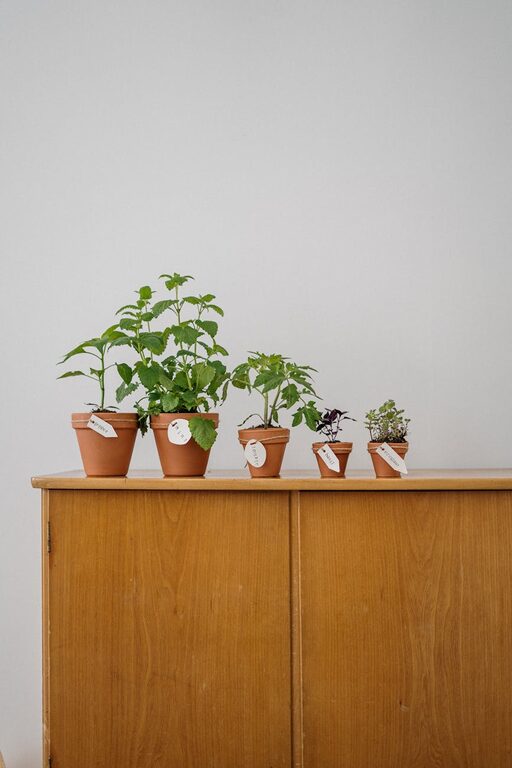Starting an indoor herb garden is a rewarding and practical way to add fresh flavors to your meals while beautifying your living space. Whether you have a tiny apartment or a spacious kitchen, growing herbs indoors is accessible to everyone. In this guide, we will walk through everything you need to know to successfully start a small herb garden indoors, from selecting the right herbs to caring for them.
Why Grow Herbs Indoors?
Growing herbs indoors offers several advantages:
– Freshness: Cut herbs as needed for the freshest taste.
– Convenience: No need to run to the store for common herbs.
– Aromatherapy: Many herbs add delightful scents to your home.
– Decor: Herb pots can brighten up your counter or windowsill.
– Educational: Great for kids and adults to learn about plants.
Choosing the Right Herbs
Some herbs are better suited to indoor growing due to their size, light requirements, and ease of care. Here are some popular and beginner-friendly options:
– Basil: Needs lots of sunlight; great for cooking.
– Mint: Very hardy and can tolerate less sunlight.
– Chives: Compact and thrives in pots.
– Parsley: Does well indoors with moderate light.
– Oregano: Prefers bright light and well-draining soil.
– Thyme: Drought-tolerant and low maintenance.
– Cilantro: Requires cooler indoor temperatures.
Selecting two or three of these herbs to start with is a great approach for beginners.
Supplies You'll Need
Before planting, gather these items:
– Pots or containers: Small pots with drainage holes work best.
– Quality potting mix: Look for a well-draining mix labeled for herbs or vegetables.
– Seeds or starter plants: Starter plants can be easier for beginners.
– Labels: To keep track of your herbs.
– Watering can or spray bottle: For gentle watering.
– Grow light (optional): Useful if natural light is limited.
Finding the Perfect Spot
Most herbs need 6–8 hours of light each day. A south- or west-facing windowsill is ideal. If natural light is insufficient, consider placing your garden under an LED grow light for 10-12 hours per day. Avoid overly drafty or hot spots.
Planting Your Herb Garden
Starting with Seeds
- Fill pots with potting soil, leaving about half an inch of space at the top.
- Sprinkle seeds evenly according to the packet instructions.
- Cover lightly with soil.
- Mist the soil to moisten without soaking.
- Place in a warm, bright location.
- Keep soil moist until seeds germinate.
- Gently remove the plant from its nursery pot.
- Loosen roots slightly if root-bound.
- Plant in your container, adding soil around the roots.
- Water lightly and place in a sunny spot.
Using Starter Plants
Caring for Your Indoor Herb Garden
Watering
– Herbs like moist soil but dislike waterlogged roots.
– Water when the top inch of soil feels dry.
– Use a pot with drainage to prevent standing water.
Light
– Rotate pots regularly for even growth.
– Supplement with a grow light if natural sunlight is limited.
Feeding
– Feed herbs with a diluted, balanced liquid fertilizer every 4-6 weeks.
– Avoid over-fertilizing as it may affect flavor.
Pruning and Harvesting
– Regularly pinch or cut back herbs to encourage bushy growth.
– Harvest leaves in the morning when oils are strongest.
– Never remove more than one-third of the plant at a time.
Watch for Pests
– Indoor gardens can attract aphids or spider mites.
– Keep leaves clean by wiping with a damp cloth.
– Use natural insecticidal soap if needed.
Common Challenges and Solutions
– Leggy plants: Usually from insufficient light—move closer to a window or add grow lights.
– Yellow leaves: Could be overwatering—check drainage and reduce watering.
– Slow growth: May need more nutrients or light.
– Moldy soil: Water less frequently and improve airflow.
Enjoying Your Herb Harvest
Use your fresh herbs in salads, soups, sauces, and teas. Freeze excess leaves by chopping and placing them in ice cube trays with water or oil for later use. Dry herbs by hanging small bunches upside down in a dry, dark place.
Final Tips
– Start small and expand as you gain confidence.
– Experiment with different herbs to find your favorites.
– Keep a gardening journal to track what works best.
– Have fun and enjoy the process!
By following these simple steps, you can nurture a thriving indoor herb garden that enhances your meals and your home. Happy gardening!


